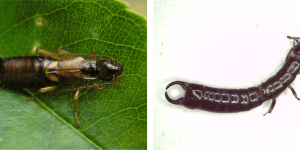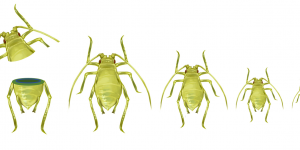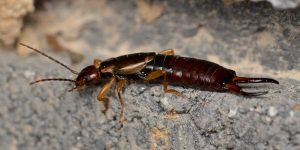Tag: taxonomy
-
Uninvited guests in your groceries
Words, illustraions and photos: Marianne CoquilleauMarianne Coquilleau With spring coming our way, gardens come to life and with it their many inhabitants. It’s no surprise then to find small caterpillars, aphids and other insects while washing your vegetables and fruits, especially if you source your vegetables locally or pesticide-free sources. You might then also notice […]blogs.unimelb.edu.au/pearg/2020/09/17/uninvited-guests-in-your-groceries
-
With great power comes great responsibility…
Words: Samantha Ward Images: Words: Samantha Ward & Marianne Coquilleau Flying the flag for the PEARG lab! [Photo credit: Marianne Coquilleau] I am a scientist. A taxonomist, to be more specific. Taxonomy is the study of naming, defining, and categorising organisms. There’s a job for that?! Actually, we still have no idea how many species […]blogs.unimelb.edu.au/pearg/2019/12/19/with-great-power-comes-great-responsibility
-
Finding “Nosy Tiger’s” and other oddly named freshwater invertebrates
Words – Eddie Tsrline Images – Eddie Tsyrlin and John Gooderham Towbiters, water scorpions and Nosy Tigers. These are just some the colourful names given to freshwater insects and other invertebrates. And there is a more serious side to these quirky creatures. The Nosy Tigers are a diving beetle larva with a peculiarly elongated head. […] -
New open access paper: Morphological and molecular analysis of Australian earwigs (Dermaptera) points to unique species and regional endemism in the Anisolabididae family
Words and images: Oliver Stuart Link to open access paper Earwigs (Dermaptera) are a challenging group of insects to study. In Australia, earwigs are variously known as pests, predators of pests (so, beneficial insects), or both at once depending on the crop type and other particulars. The invasive Forficula auricularia (the European earwig) is the […] -
An adventure in Alice at the AES conference 2018
Header photo: Marianne Coquilleau, Samantha Ward, Xuan Cheng, Josh Douglas, Tom Schmidt and Oliver Stuart Words: Oliver Stuart and Samantha Ward Introduction This past September was the 49th Annual General Meeting and Scientific Conference of the Australian Entomological Society (AES). The Society publishes an Australia-focused journal and maintains, through its membership, a network of professional […]blogs.unimelb.edu.au/pearg/2019/01/08/an-adventure-in-alice-at-the-aes-conference-2018
-
Biology of the babushkas
Words: Samantha Ward As the name suggests, at the Pest & Environmental Adaptation Research Group we are interested in pest species and enjoy investigating novel approaches to sustainably control such organisms. I began my PhD at PEARG in 2016 studying parasitoid wasps; A group of wasps that lay their eggs inside or onto other arthropods. […]blogs.unimelb.edu.au/pearg/2018/05/10/biology-of-the-babushkas
-
What’s in a (species) name? Using genetics to map the hidden diversity of earwigs
Written by Oliver Stuart, Image credit: Ryan Hodnett [CC BY-SA 4.0 (https://creativecommons.org/licenses/by-sa/4.0)], from Wikimedia Commons There are a lot of different insects; this cannot be overstated. Of the roughly 2 million animal species (that we know of), insects make up well over half. This mega-diversity has been a source of delight for biologists for centuries, […]







